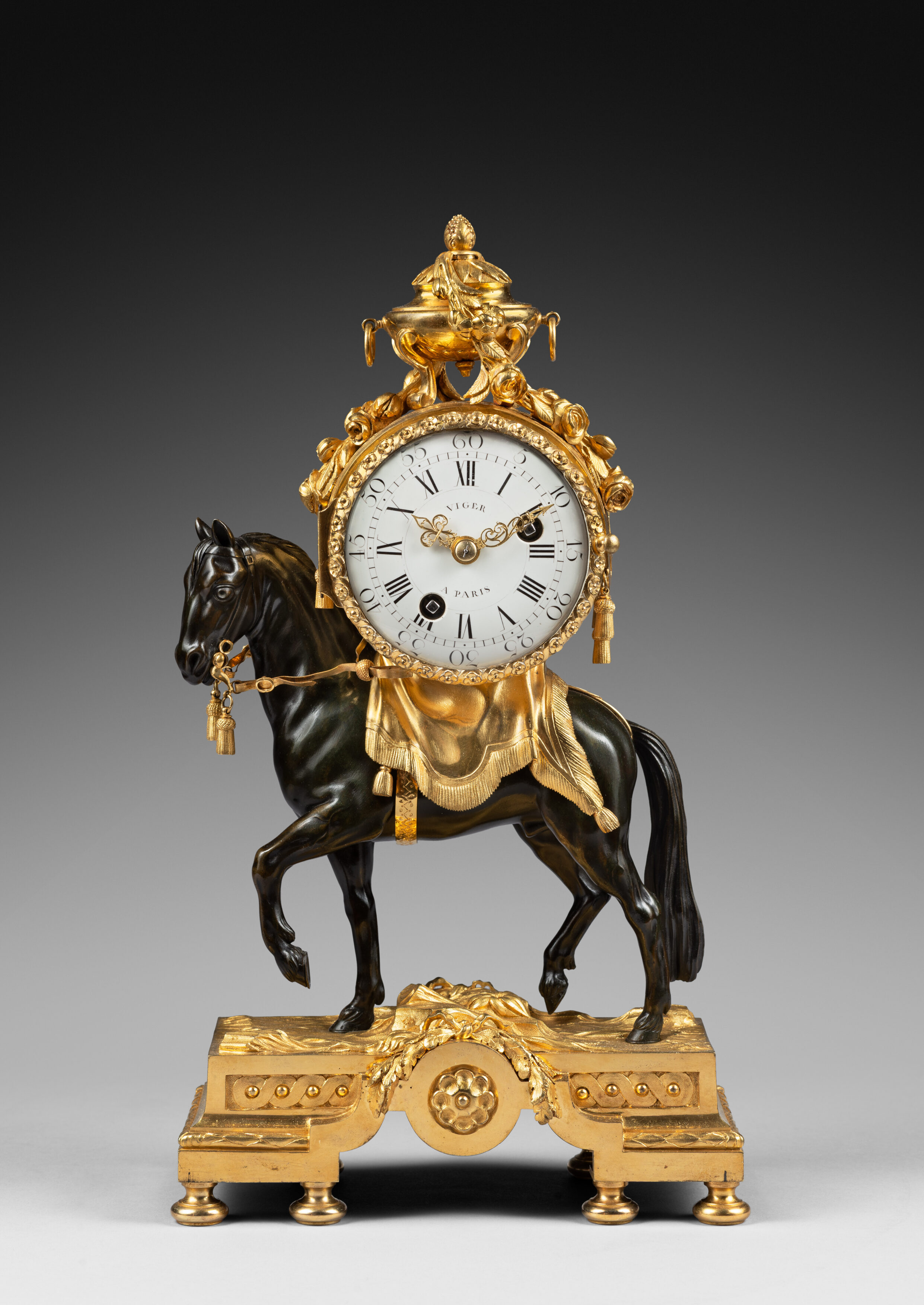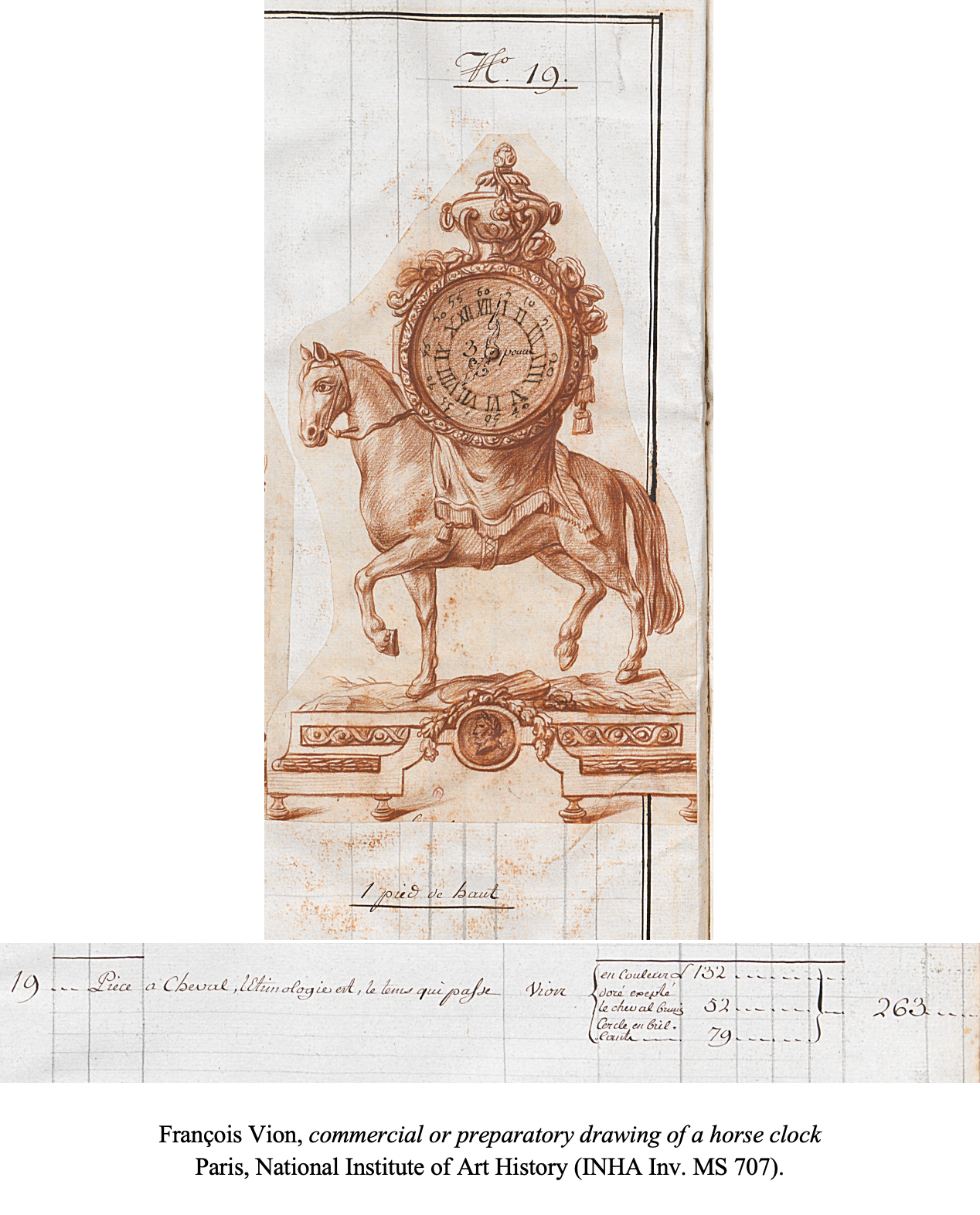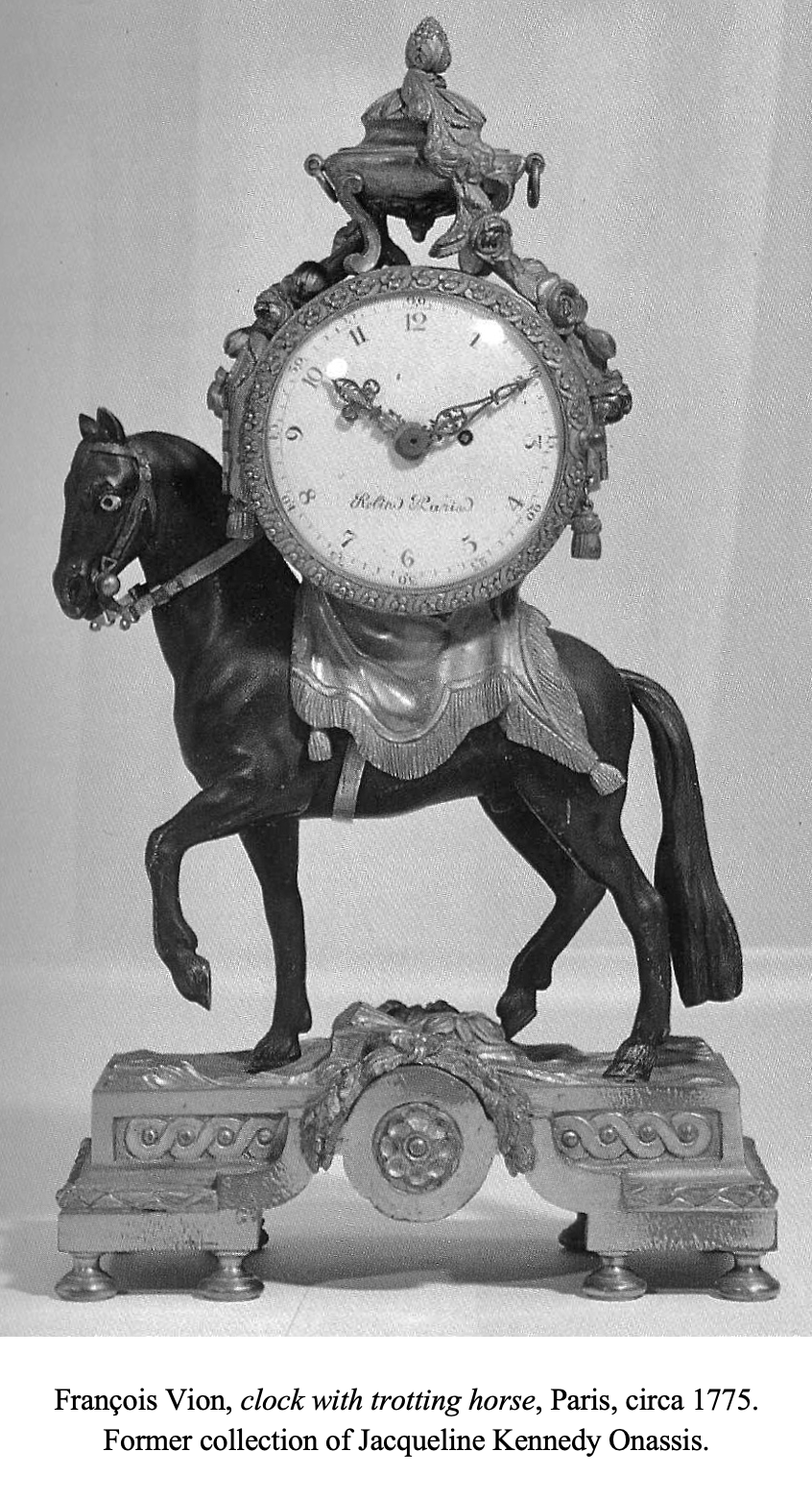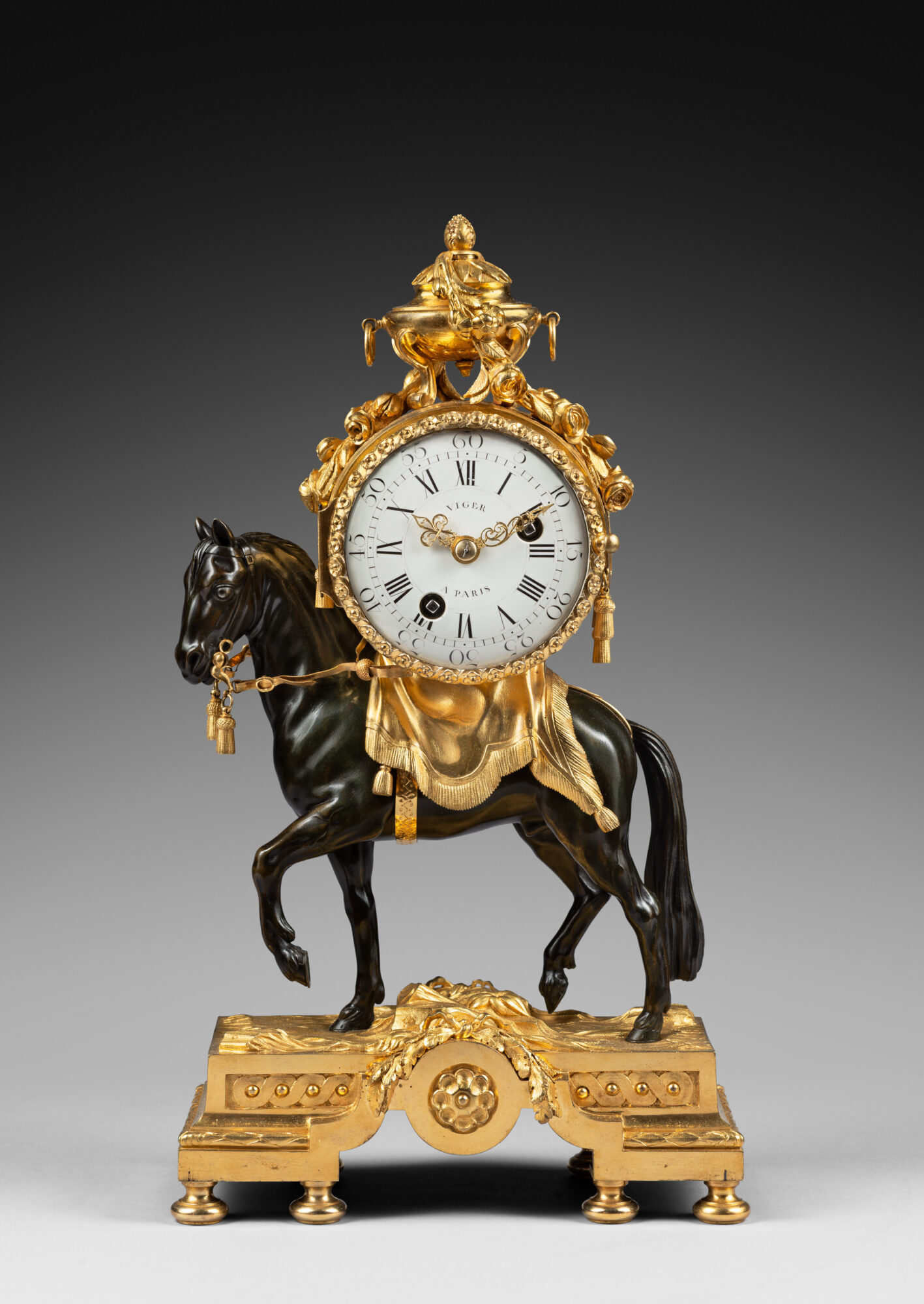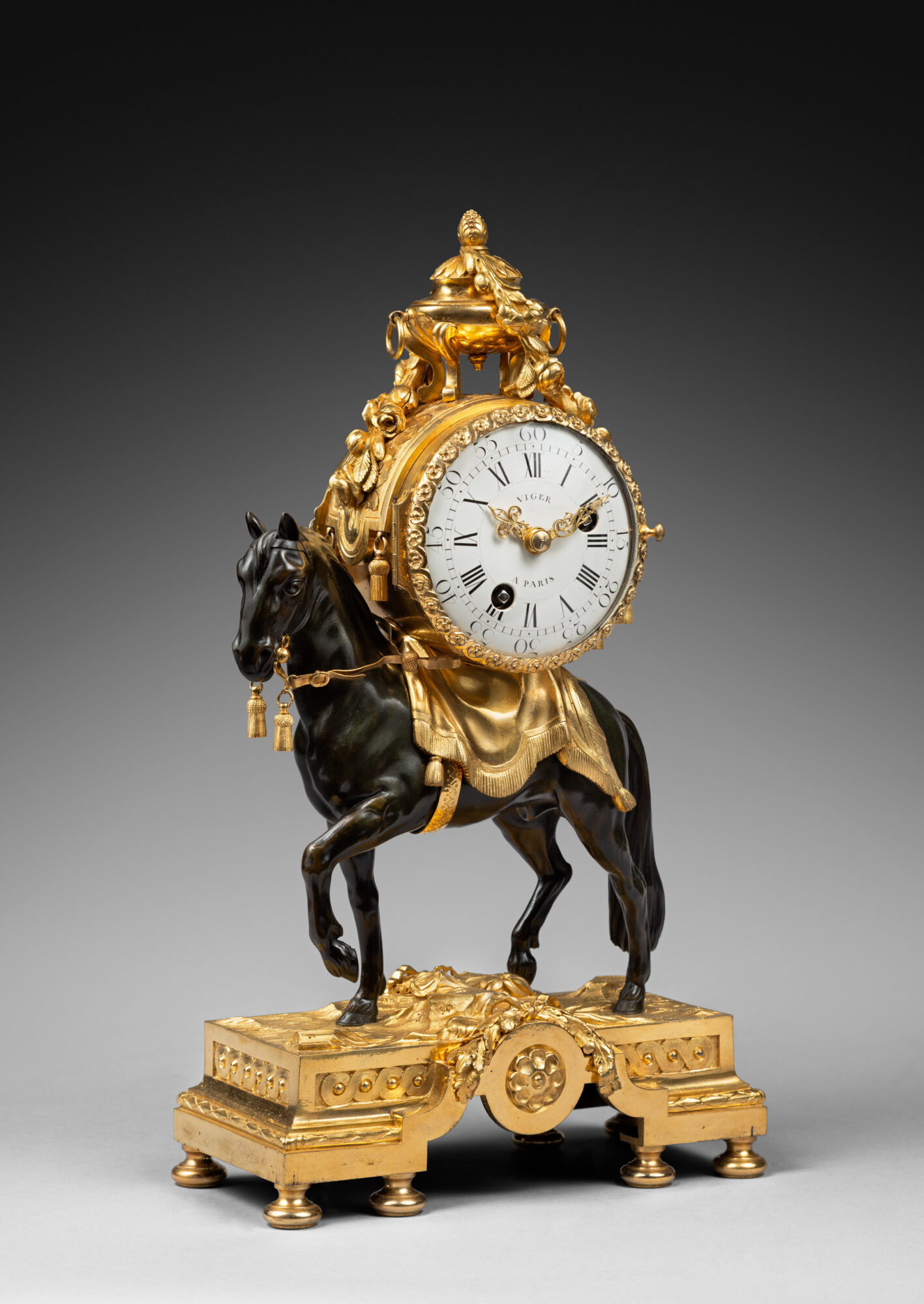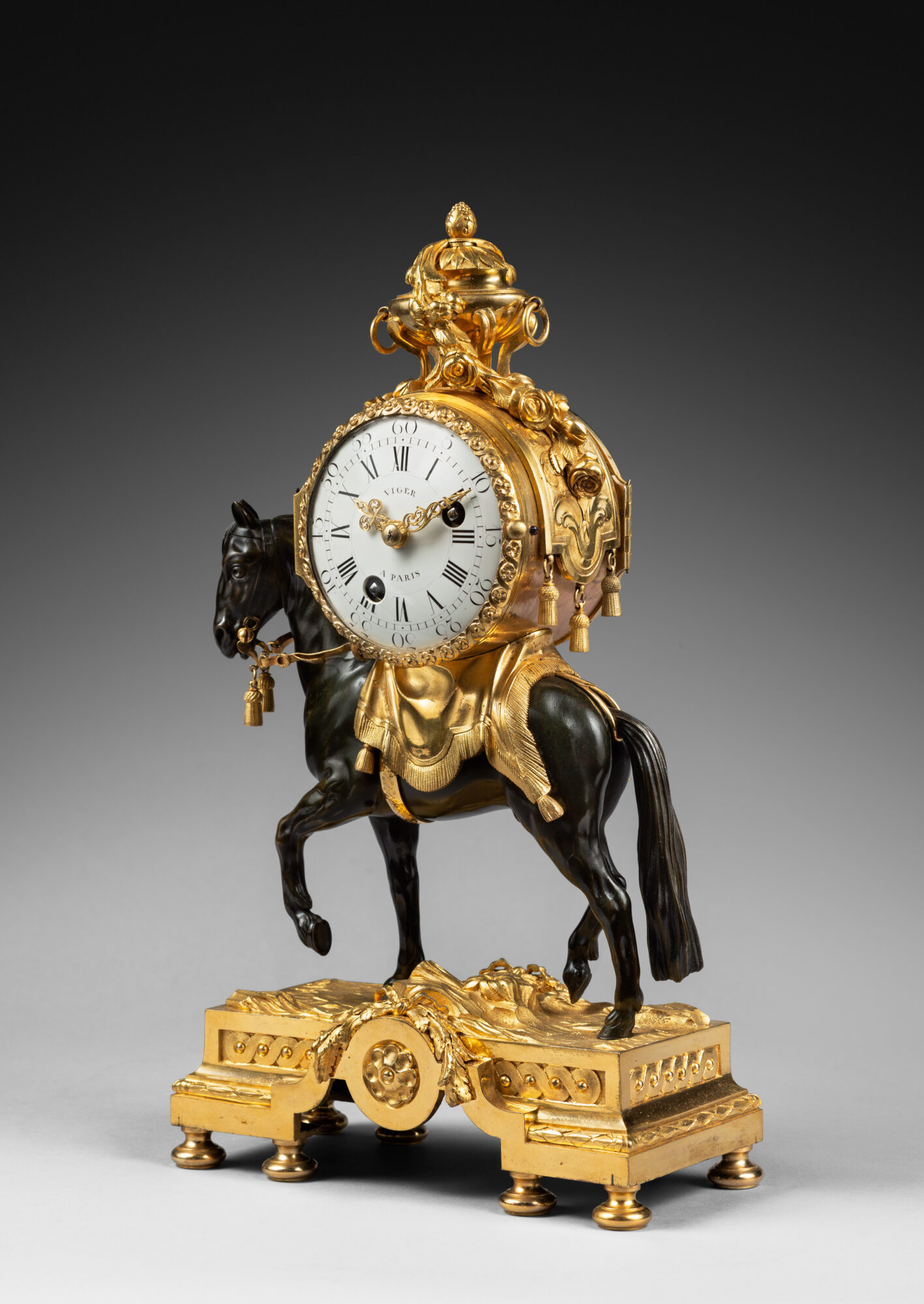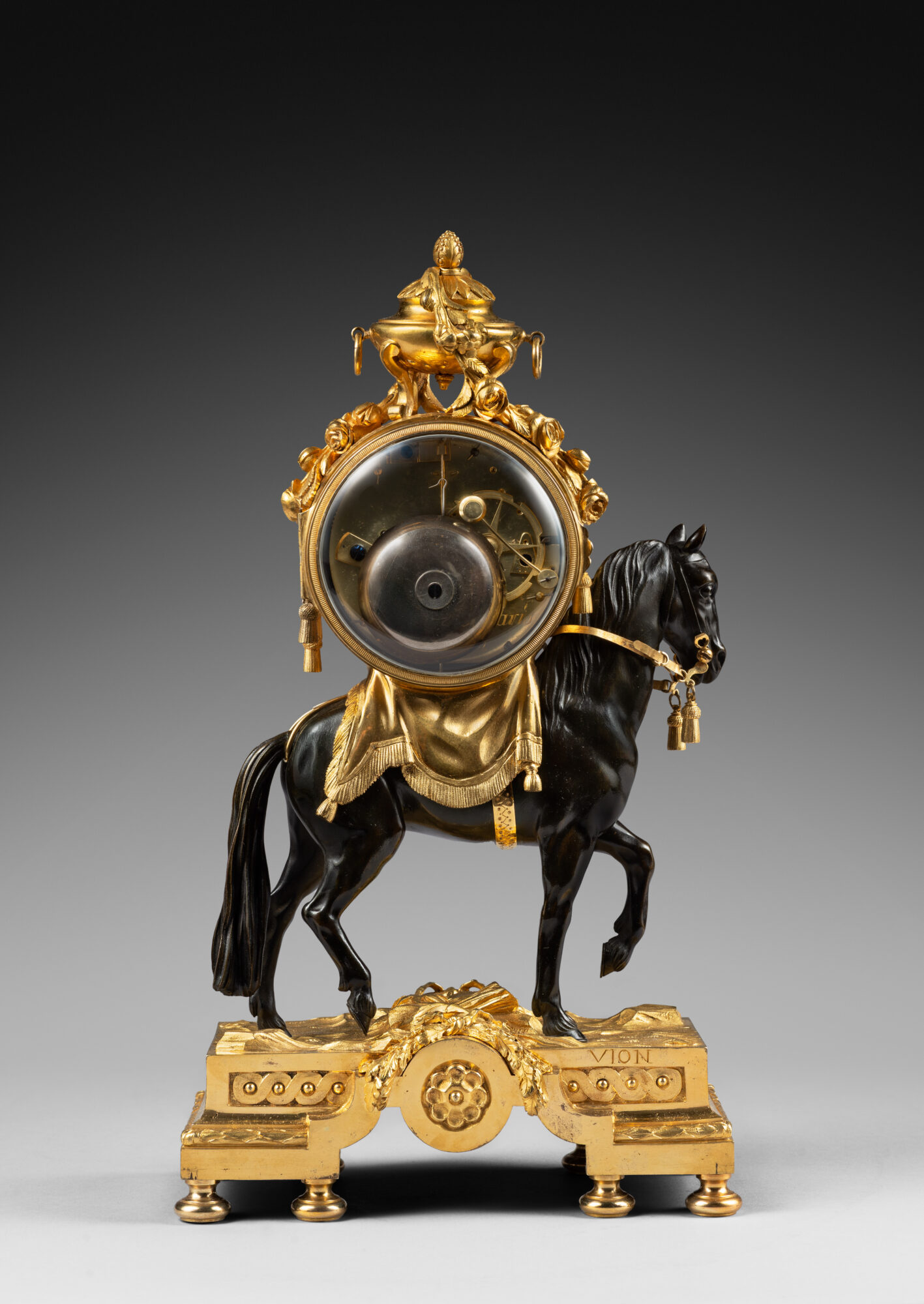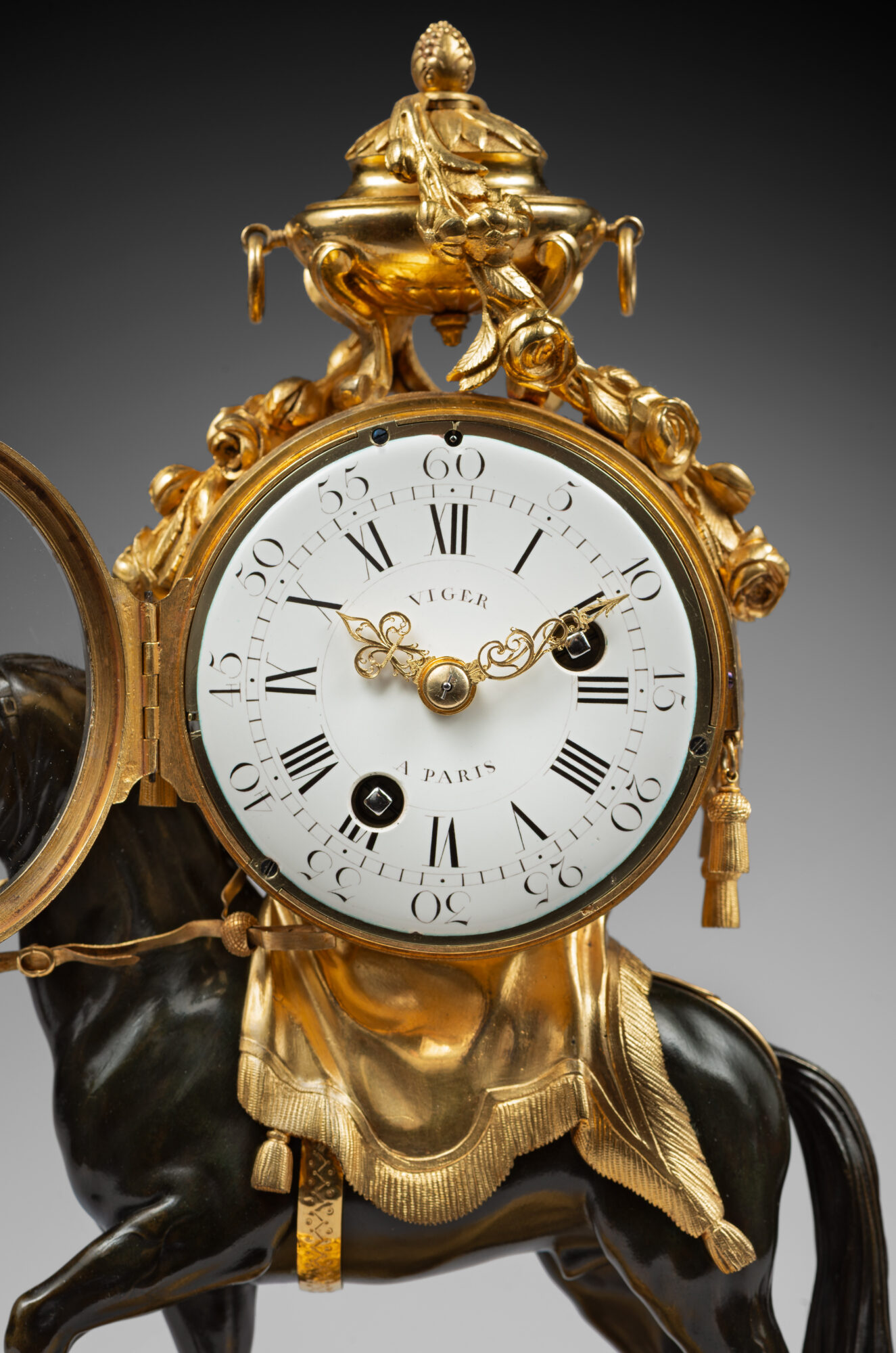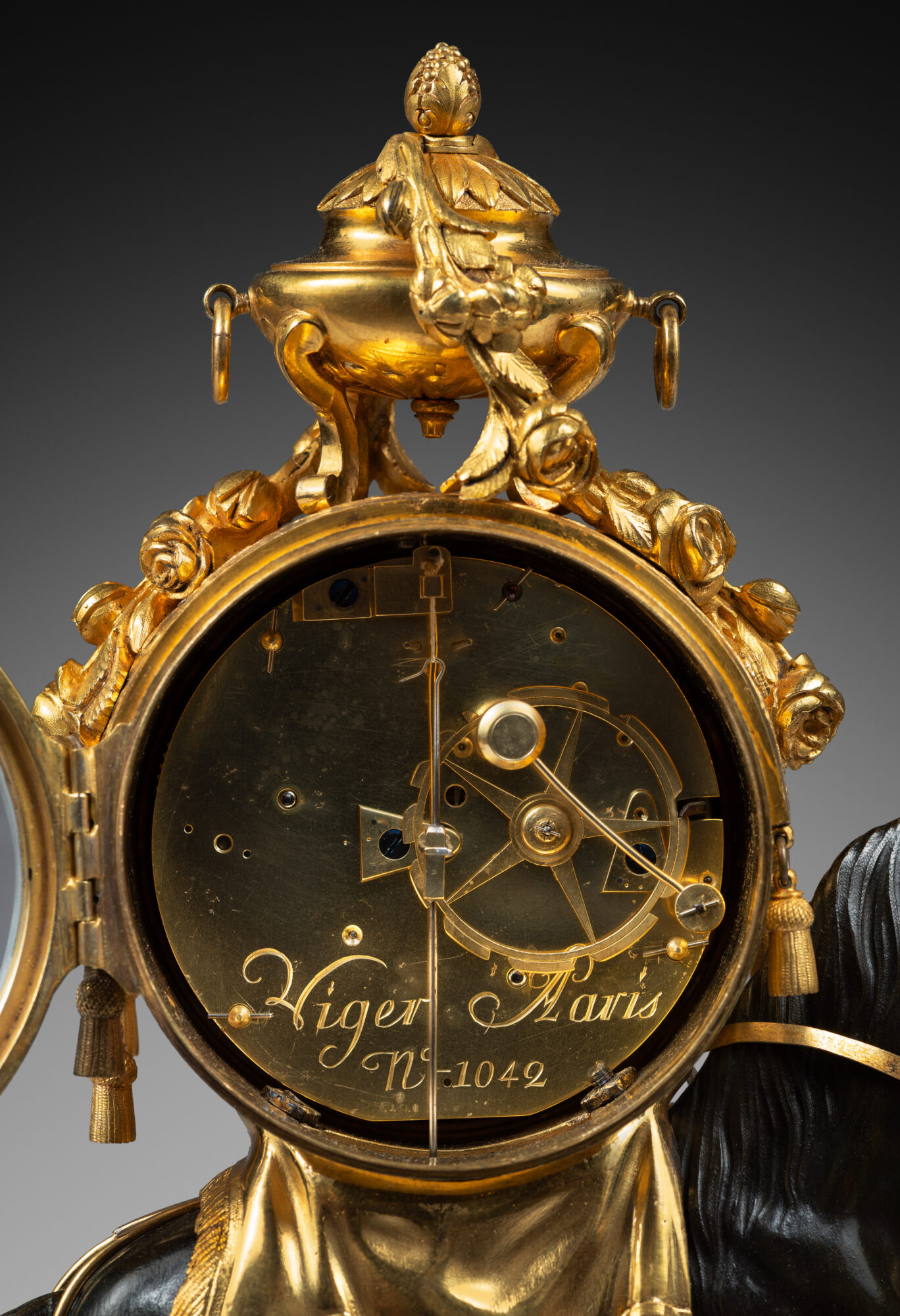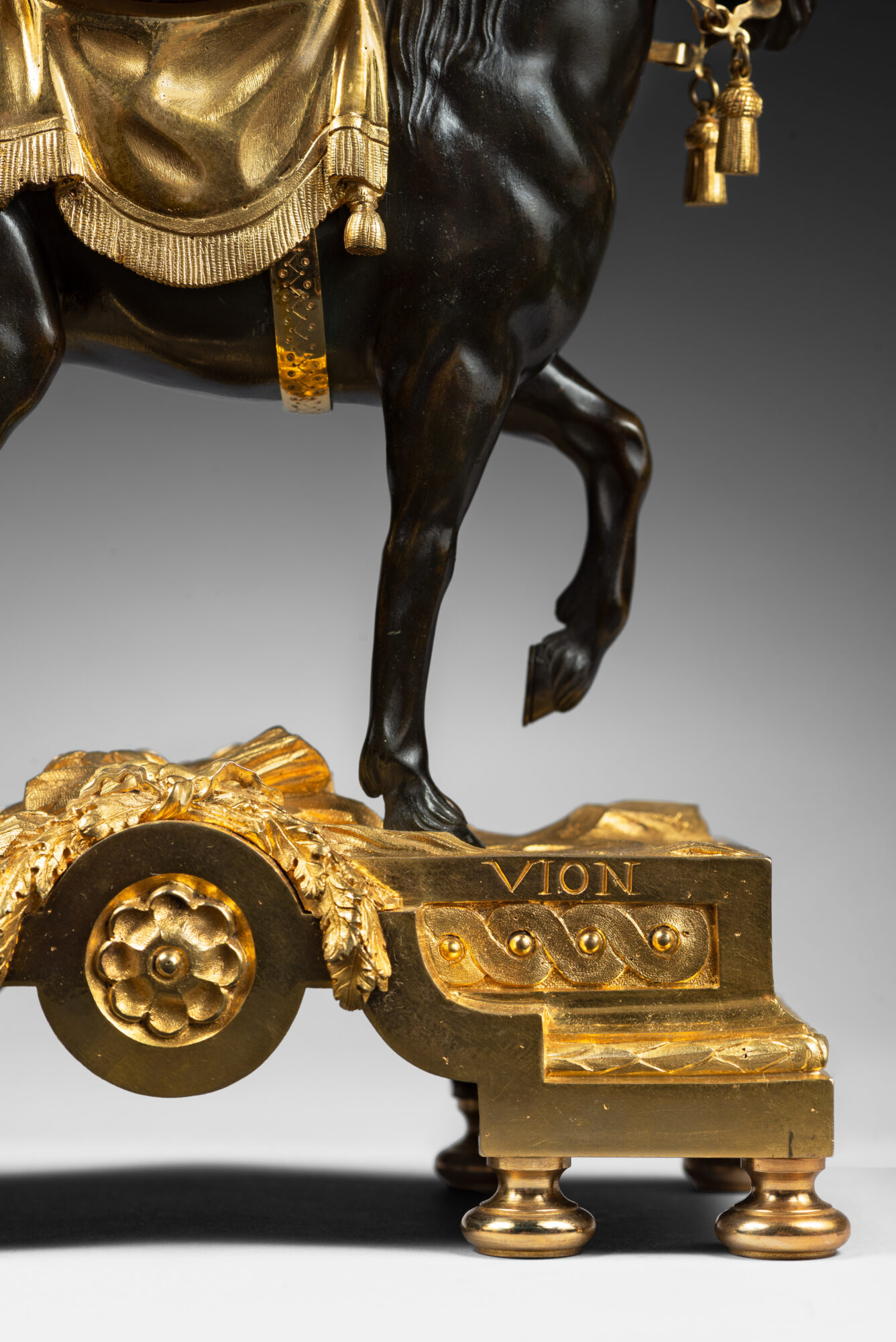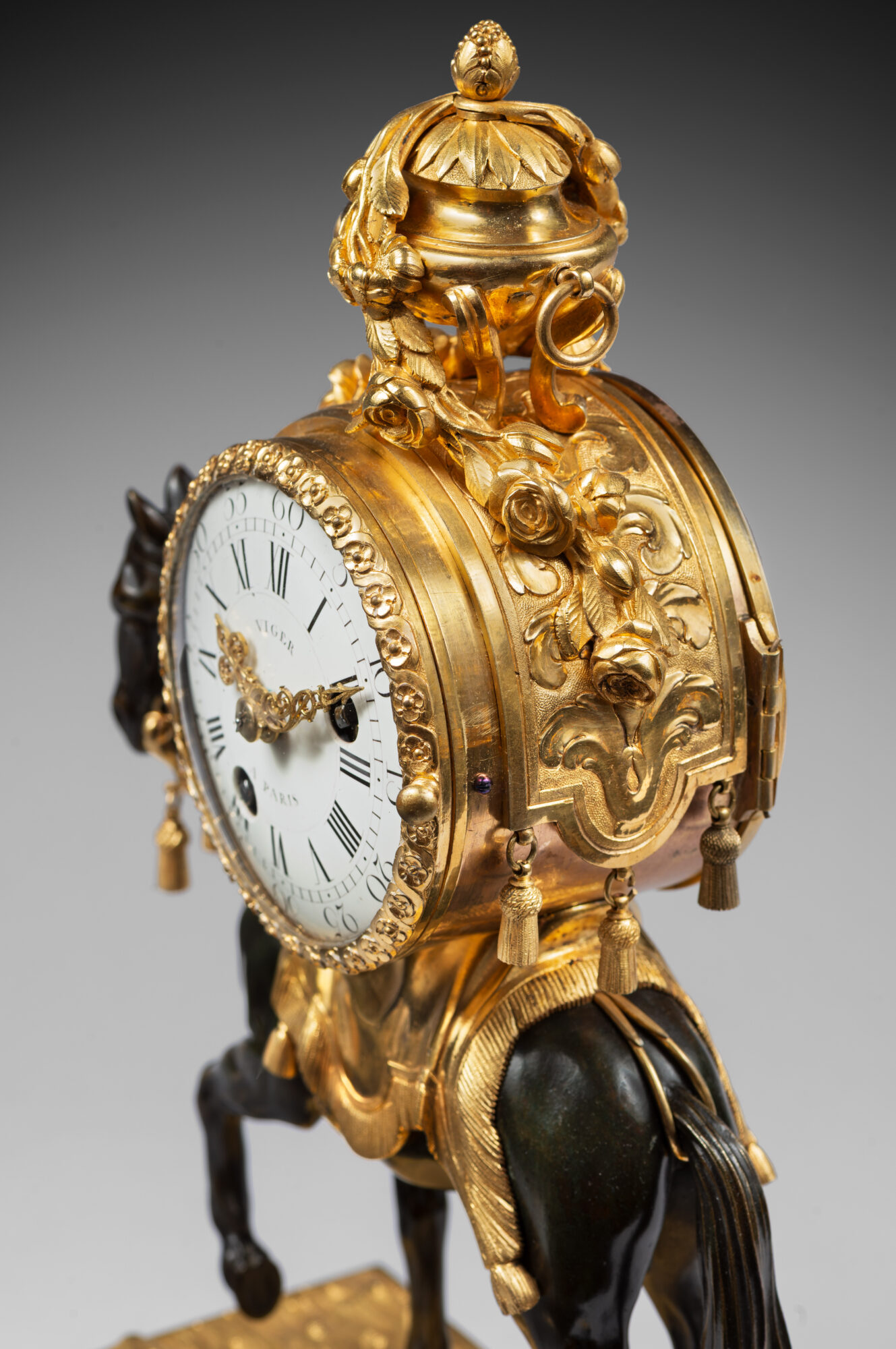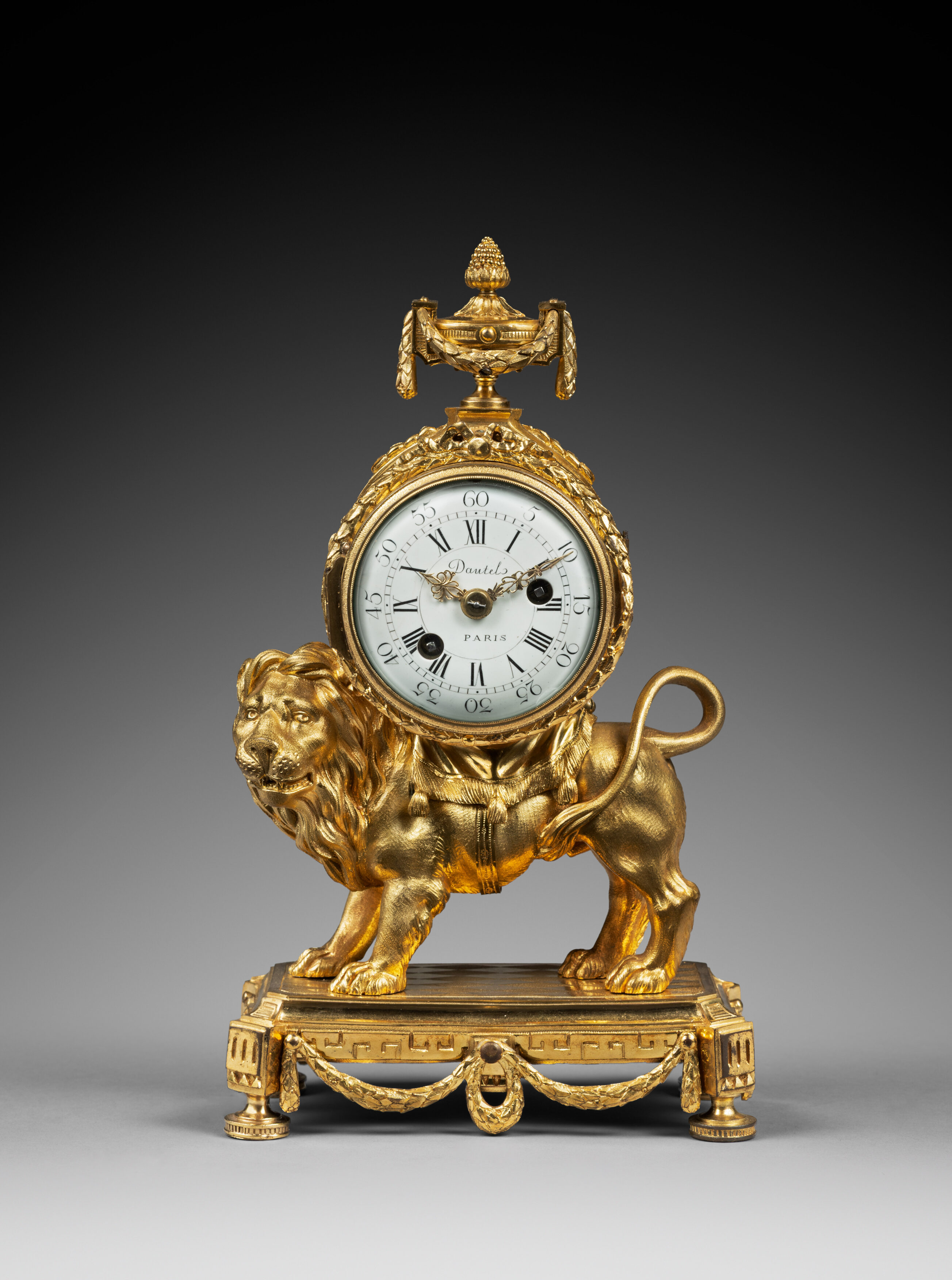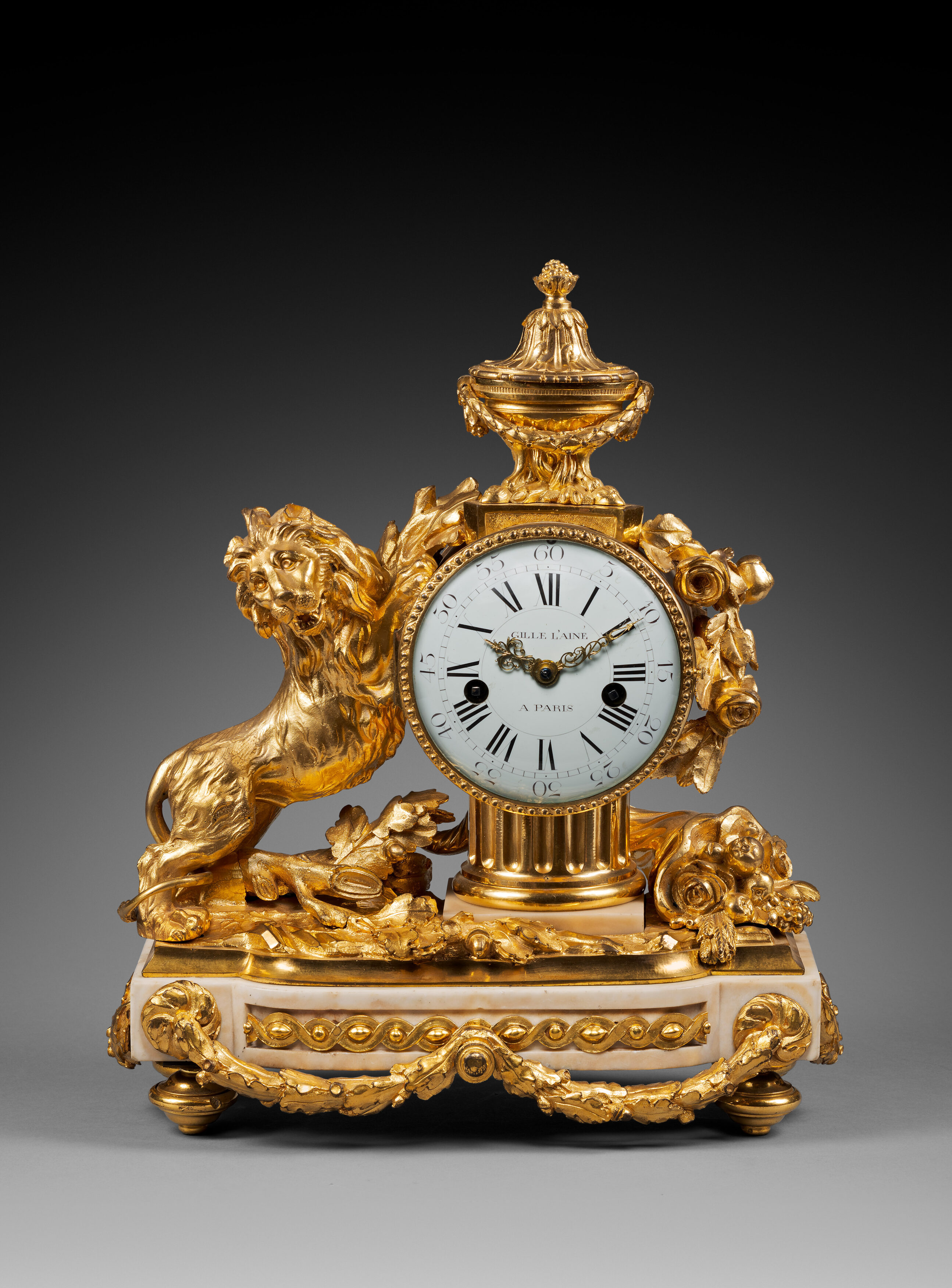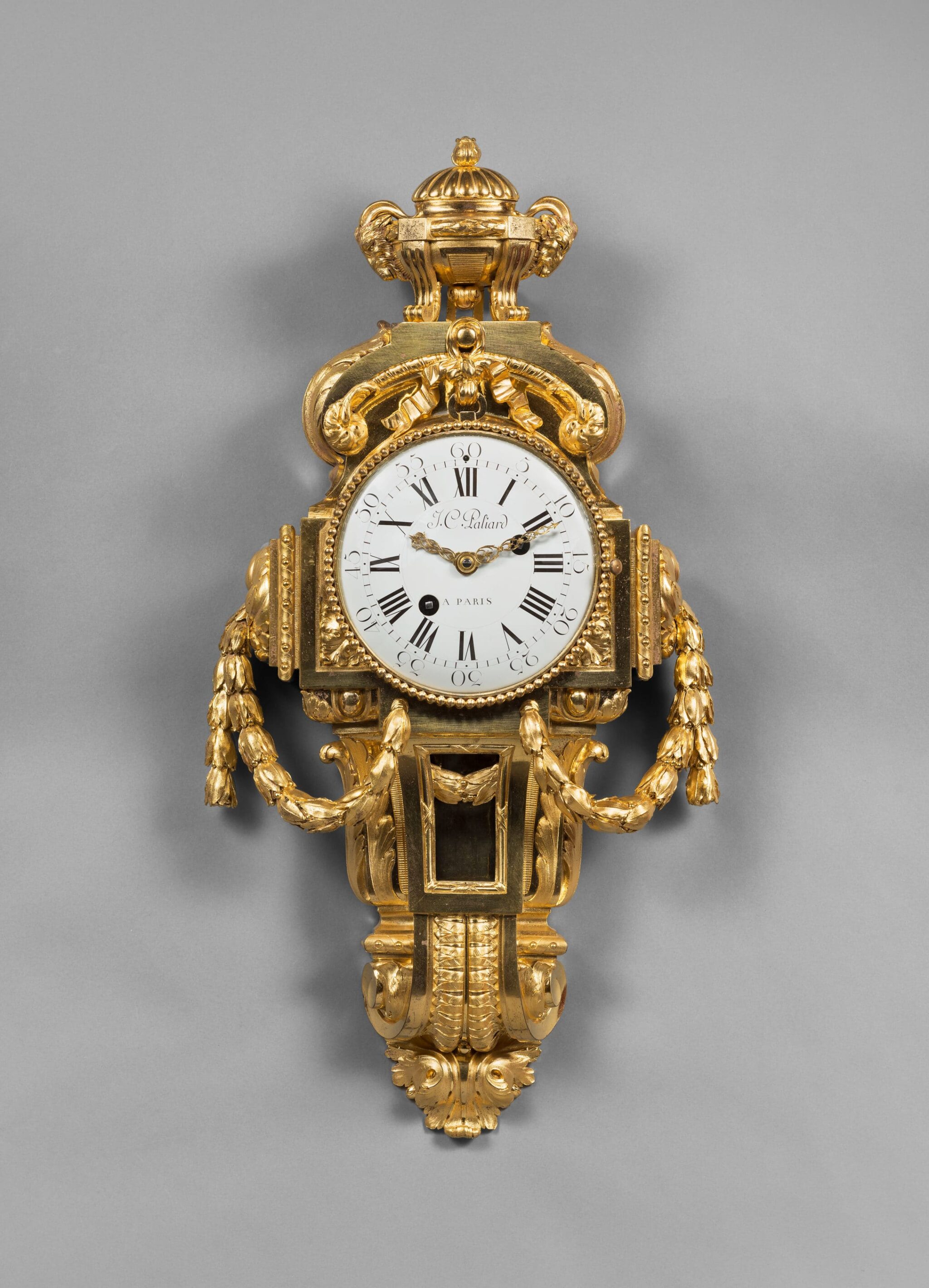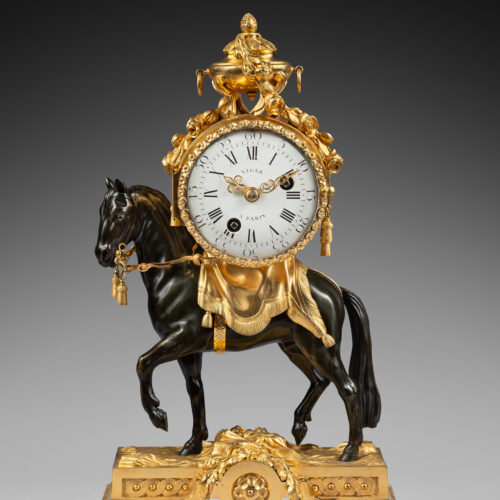Exceptional Gilt and Patinated Bronze Mantel Clock
“The Trotting Horse”
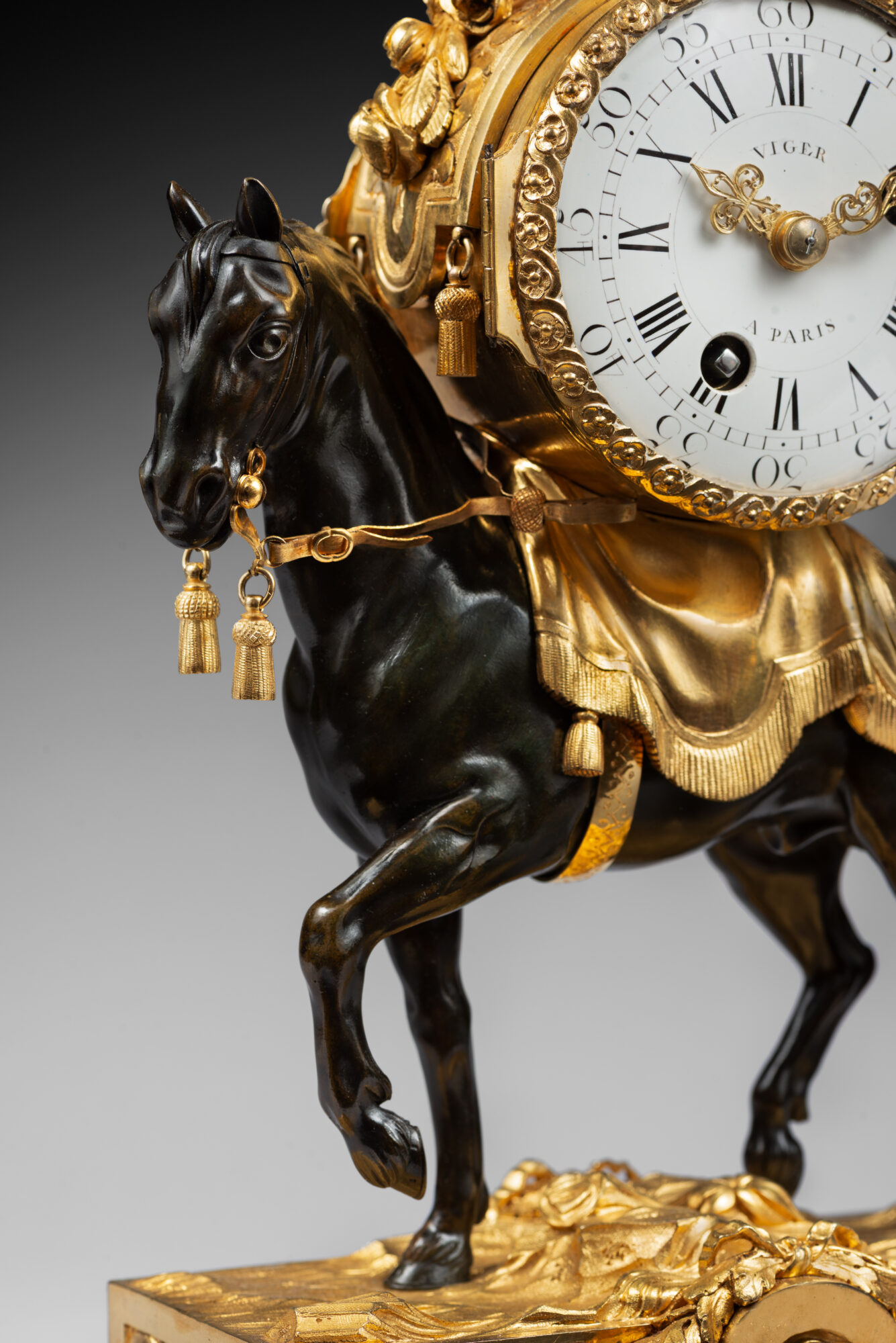
Dial and movement signed “Viger à Paris” by master clockmaker François Viger
Case stamped “VION” by master bronze-caster François Vion
Paris, Transition period between Louis XV and Louis XVI, circa 1770-1775.
BIBLIOGRAPHY:
– Hans Ottomeyer and Peter Pröschel, Vergoldete Bronzen, Die Bronzearbeiten des Spätbarock und Klassizismus, Munich, 1986, Band I, p. 180, fig. 3.7.7 (illustration).
– Elke Niehüser, Die französische Bronzeuhr, Eine Typologie der figürlichen Dartstellungen, Munich, 1997, Editions Callwey, p. 242, fig. 901 (illustration).
– Richard Mühe and Horand M. Vogel, Horloges anciennes, Manuel des horloges de table, des horloges murales et des pendules de parquet européennes, Bibliothèque des Arts, Office du Livre, Fribourg, 1978, p. 107, fig. 132 (illustration).
The round white enamel dial, signed “Viger à Paris”, indicates the Roman numeral hours and Arabic five-minute intervals by means of two hands in very detailed gilt bronze; the hour hand representing a fleur-de-lys, a symbol of royalty. The case is in finely chased gilt bronze and patinated bronze. The back plate of the mechanism is also signed “Viger Paris”. The movement is housed in a drum case that is adorned with scrolls, tassels and fringe, a garland of leaves and flowers, and an urn with console feet and ring handles. The bezel is decorated with a frieze of flowers. The drum case is set on a gilt fringed saddlecloth on the back of a patinated trotting horse that is standing on a naturalistic terrace with rocks and grass. The quadrangular base is adorned with laurel toruses and reserves with interlace friezes; it is centered by a flower medallion with a garland of leaves and a bow on top. The bronze base is stamped “VION” at the back. The clock is raised upon eight flattened feet decorated with molding.
Clocks featuring animals that support the movements appeared during the reign of Louis XV and became quite popular during the second half of the 18th century, when the neoclassical artistic movement accompanied the renewal of the decorative arts. The present clock is exceptional due to the quality of its decoration, the rarity of the themes, and due to the fact that the preparatory drawing is preserved in the National Institute of Art History (Institut national d’Histoire de l’Art) in Paris. In addition to the drawing of The Trotting Horse Clock that was included in an album of bronze-caster François Vion, the present model bears the mark of his maker (see H. Ottomeyer and P. Pröschel, Vergoldete Bronzen, Band I, p. 180, fig. 3.7.8). Among the rare identical models known today, which feature certain variations in their decoration, one example, whose dial is signed “Cartier à Paris”, is pictured in G. and A. Wannenes, Les plus belles pendules françaises, De Louis XIV à l’Empire, Editions Polistampa, Florence, 2013, p. 277. A second clock, formerly in the Diette collection, is illustrated in Tardy, La pendule française, 2ème Partie: Du Louis XVI à nos jours, Paris, 1975, p. 232. A third example was included in the Rudolf Lepke sales, which contained many objets d’art from the former Russian imperial collections (sold Berlin, February 12, 1929, lot 87). One further such clock was offered in the sale of the collection of Jacqueline Kennedy-Onassis (sold Sotheby’s, New York, April 23-26, 1996).
François Vion (circa 1737 - after 1790)
One of the most important Parisian bronze casters of the second half of the 18th century. Having become a master bronze caster in 1764, he was a rival of the Osmonds and Jean-Joseph de Saint-Germain. He specialized in creating clock cases, several of which bear his signature, particularly those known as “Venus and Love” and “Love and the Three Graces”.
François Viger (circa 1708 - 1784)
An 18th century Parisian clockmaker. Exercising independently at first, he became a master in August 1744 and opened a workshop in the rue Saint-Denis. As Jean-Dominique Augarde aptly states: “the pieces made in his workshop are of exceptional quality”. (Les ouvriers du Temps, Genève, 1996, p. 405). Viger ordered his clock cases from the best bronziers and cabinetmakers of the day, collaborating with such fine artisans as Jean-Joseph de Saint-Germain, Antoine Foullet, and Jean-Baptiste Osmond. His work may be found today in important museums and private collections worldwide, including the Basel Historisches Museum de Bâle, the Wallace Collection in London, the Louvre in Paris, the Hermitage in Saint Petersburg and the Liazenski Palace in Warsaw.
